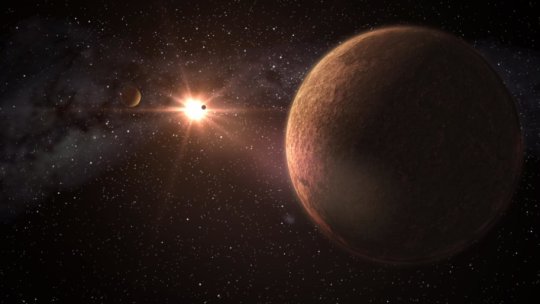[ad_1]
The information about these new exoplanets has been obtained from the data collected by the K2 mission of NASA’s Kepler satellite, which started in November 2013. The work, which will be published in the Monthly Notices of the magazine Royal Astronomical Society (MNRAS), reveals the existence of two new planetary systems detected from the eclipses they produce in the stellar light of their respective stars. In the research team led jointly by Javier de Cos at the University of Oviedo, and Rafael Rebolo at the IAC, participate, along with researchers from these two centres, others from the University of Geneva and the Gran Telescopio Canarias (GTC).
The first exoplanetary system is located in the star K2-239, characterized by these researchers as a red dwarf type M3V from observations made with the Gran Telescopio Canarias (GTC), at the Roque de los Muchachos Observatory (Garafía, La Palma). It is located in the constellation of the Sextant at 50 parsecs from the Sun (at about 160 light years). It has a compact system of at least three rocky planets of similar size to the Earth (1.1, 1.0 and 1.1 Earth radii) that orbit the star every 5.2, 7.8 and 10.1 days, respectively.
The other red dwarf star called K2-240 has two super-Earth-like planets about twice the size of our planet. Although the atmospheric temperature of red dwarf stars, around which these planets revolve, is 3,450 and 3,800 K respectively, almost half the temperature of our Sun. These researchers estimate that all planets discovered will have temperatures superficial tens of degrees higher than those of the planet Earth due to the strong radiation they receive in these close orbits to their stars.
Future observation campaigns with the new James Webb space telescope will characterize the composition of the atmospheres of the discovered planets. Spectroscopic observations with the ESPRESSO instrument, installed in the Very Large Telescope (VLT), of the European Southern Observatory (ESO), or with future spectrographs in the GTC or in new astronomical facilities, such as the ELT or the TMT, will be crucial to determine the masses, densities and physical properties of these planets.
The Gran Telescopio Canarias (GTC), installed at the Roque de los Muchachos Observatory (Garafía, La Palma) is part of the Singular Scientific and Technical Infrastructure network (ICTS) of Spain.
Story Source:
Materials provided by Instituto de Astrofísica de Canarias (IAC). Note: Content may be edited for style and length.
[ad_2]















